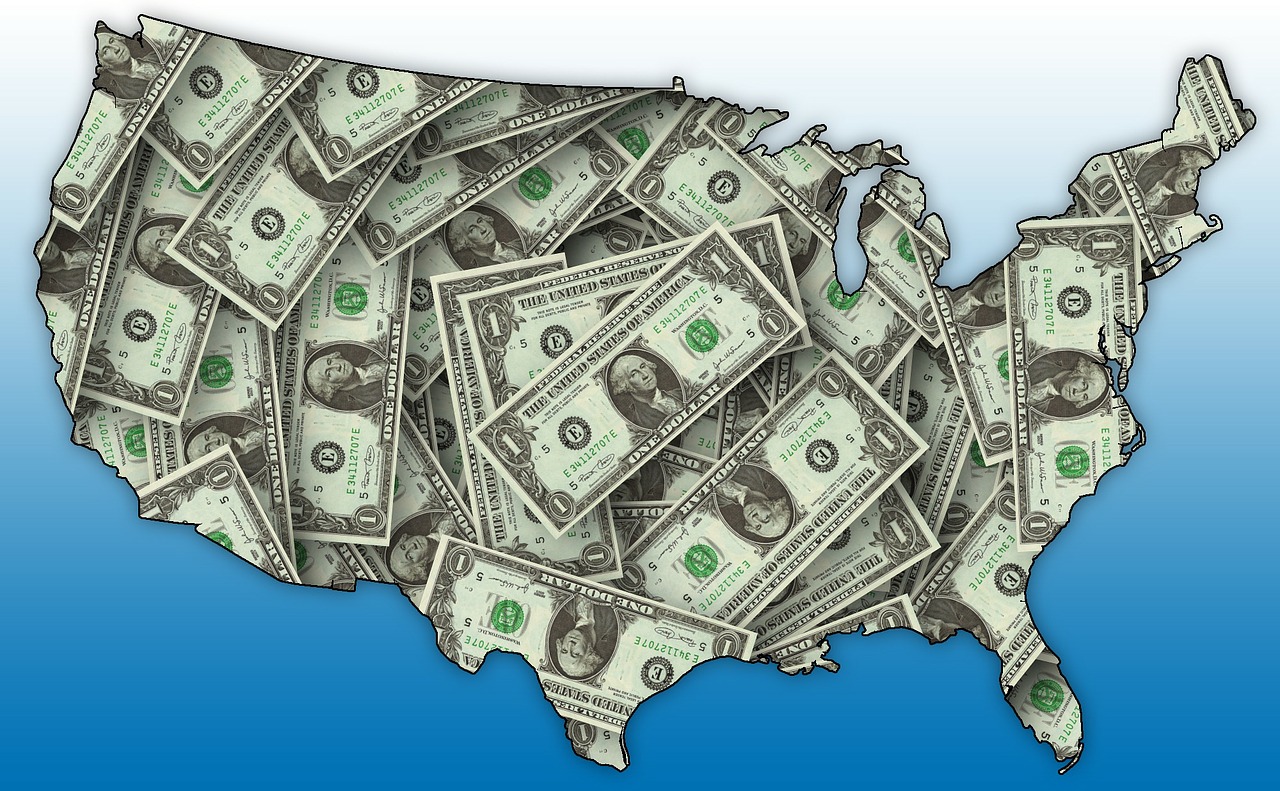5 Things We Learned This Week - 2/7/2021
Submitted by Silverlight Asset Management, LLC on February 7th, 2021

February 7, 2021
The S&P 500 index rose over 4% this week, gaining the most since November.
U.S. employers opened the new year by adding 49,000 jobs in January, a welcomed improvement following sharp declines in December. The U.S. economy is still 9.9 million jobs shy of where it was in February 2020.
Many jobs will return with mass immunization and fully loosened restrictions, particularly in the retail, hospitality, and travel/tourism sectors. However, firms across every sector are also looking for ways to get leaner, while simultaneously embracing a rapid shift to ‘digital everything.’ This unusual mix of tailwinds and headwinds makes forecasting the labor market particularly challenging in 2021.
The Biden administration met with 10 Republican Senators this week in an effort to reach bipartisan consensus on a stimulus package. Republicans offered a $618 billion package to counter Biden’s $1.9 trillion package, underscoring the gulf that still exists between the two parties’ visions for the economy.
Efforts to reach bipartisan agreement are fading – the $1.9 trillion budget cleared a procedural hurdle in the Senate early Friday morning, after a “vote-a-rama” session lasting over 12 hours. The “sausage-making” happens now, with committees in the House and the Senate starting the weeks-long process of working on writing the actual aid legislation. The goal is to have the package ready by mid-March when extra unemployment benefits expire.

GameStop Gets Stomped

In our coverage of GameStop last week, we warned readers of the dangers of being seduced by micro-bubbles, writing “assets always end up being worth what they’re actually worth.”
It comes as little surprise then that GameStop shares fell off a cliff this week, plummeting over 80% from last week’s highs. Another hyped stock last week, AMC, also posted steep declines falling 60% from the high. At this point, chances are there were many more losers than winners in these trades.
The Reddit and Twitter forums reportedly shifted attention to small biotech companies with promising new medicines, bidding up drug makers with long odds of bringing a new treatment to the market – creating another series of micro-bubbles.
Investing can feel like a game when you’re winning, but it becomes more real when things turn the other direction. That’s when things like process, patience and discipline start to matter again.

What The Hershey Company Tells Us About Inflation

The U.S. economy is still clawing its way back to pre-pandemic levels. But for many businesses, input costs have already recovered fully, driving up the cost of production. CEOs across the business landscape have arrived at a fork in the road: either keep prices steady and watch margins shrink, or pass these rising costs along to retailers and consumers. The path taken depends on the company’s market share, brand strength, and consumer loyalty.
Take Hershey Co., for example. CEO Michele Buck announced plans this week to raise the price of Hershey kisses, miniature chocolate bars, and other seasonal treats effective for this year’s holiday season. It’s the first price increase for these items since 2014. When holiday season arrives, it’s up to retailers whether to pass along Hershey’s rising costs to consumers. Usually, they do, because they know demand for Hershey products is relatively inelastic. Meaning: price increases do not automatically lead to declining demand.
In an inflationary environment, firms across the board will need to make difficult – and sometimes existential – decisions about pricing. It follows that there’s a strong case in 2021 to favor quality firms that can raise prices without losing market share. Pricing power is one reason Silverlight clients own Hershey.
As shown below, the Prices Paid component of the ISM Manufacturing Index recently breached 80 for just the third time in the last 15 years. In 2008, consumer price inflation (CPI) was over 5%. In 2011, it was around 4%. In 2021, CPI is clocking in at just 1.4% for now. As more companies raise prices like Hershey, look for that number to rise in the coming months.


Another Casualty of the Pandemic: Gym Memberships

Gyms shut down en masse during the pandemic and many will never reopen.
According to a study by the New Consumer and Coefficient Capital, 76% of consumers have switched to exercising at home. This isn’t a very meaningful statistic given consumers have few choices, but here’s the kicker: 66% say they prefer home workouts to gyms. This explains why companies like Peloton, Nautilus, and Lululemon have seen profit and share prices surge over the last year, while Planet Fitness is down year-over-year with no clear plan for recovery.
Ironically, consumers are in many cases spending more for home workouts than they did at gyms. For instance, Peloton’s least expensive bike is $1,895, but then consumers are upsold subscriptions for classes ($13 to $40 a month) and accessory packages (shoes, weights, headphones) which can cost up to $450.
If there’s one thing we know about fitness, it’s a fad-driven industry. The pendulum could very well swing back to gyms. But in order for that to happen, gyms will need to reinvent themselves by offering more soul-cycle type classes, group/trainer-driven workouts, boot camps, yoga, etc.

More Americans Have Been Vaccinated Than Have Contracted Covid-19

Approximately 35.2 million vaccines have been administered in the U.S., a figure exceeding the 26.4 million reported Covid-19 cases in the U.S. This milestone is largely symbolic, but it’s also a reminder we can inoculate people much faster than the virus can spread.
Bloomberg also reports the U.S. has been administering shots at a faster daily rate than any country in the world, which should restore some confidence in the country’s ability to mobilize and produce positive outcomes. At the current rate of about 1.35 million doses per day, it will take approximately 11 months to inoculate 75% of the population, which Dr. Fauci considers a benchmark for a return to normalcy.
The pace of daily doses will likely keep improving, as more shots become available and as the infrastructure for administering them matures.

Working Remotely In a Different State?

Millions of Americans worked remote in 2020, with many moving to an entirely different state to do so. Readers probably know at least one person who relocated to someplace like Montana or their hometown for a change of scenery during the pandemic.
While the idea may have sounded great at the time, many are now confronting an unexpected consequence of relocating: taxes.
Thing is, many states do not allow people to relocate temporarily without tax implications. Chances are, a person who worked in two or more states in 2020 will have to file income taxes for the income earned in those states – setting up a possible headache for tax time.
The actual tax outcomes can be good or bad. About 15 jurisdictions, like Maryland, Virginia and Washington D.C. have agreements with neighboring states allowing commuters to file and pay taxes where they live. Other states may not have income taxes at all, like Tennessee or Texas, so filing in that state may not mean owing any additional money. In some cases, a remote worker could potentially save money on taxes in 2020, if you left a high tax state for a low tax state, and the high tax state allows you to credit taxes you pay in another state.
Like most tax-related items, it’s complicated. Here's a helpful guide for finding out what your state's rules look like.

Lessons From One of the World’s Best Decision-Makers
Jeff Bezos sent ripples through the financial media this week when he announced he would be stepping down as CEO of Amazon, and transitioning to a new role as executive chairman. It wouldn’t be hard to argue Jeff Bezos is the best CEO of the last century. Bezos spelled out a series of clear management principles in Amazon’s first shareholder letter in 1997, and since then the company has thrived while staying true to those principles.
None of us are likely to build a $1.7 trillion company in 25 years. But we can emulate the principles that drove Amazon’s success, applying them to our own careers and businesses in an effort to achieve better outcomes.
I wrote about Bezos’ philosophy in a Forbes column several years ago. We can boil it down to a few key principles:
- Find ways for you or your business to add unique value
- Prioritize long-term impact over short-term factors when making important decisions
- Carefully curate the people you associate with
When originally deciding to launch Amazon, Bezos used a Regret Minimization Framework. This decision-making tool involves asking a basic question: In “X” years, will I regret not doing this?
If we ask this question and the answer is “Yes,” in most cases, we should probably face our fears and just do it.
This material is not intended to be relied upon as a forecast, research or investment advice. The opinions expressed are as of the date indicated and may change as subsequent conditions vary. The information and opinions contained in this post are derived from proprietary and nonproprietary sources deemed by Silverlight Asset Management LLC to be reliable, are not necessarily all-inclusive and are not guaranteed as to accuracy. As such, no warranty of accuracy or reliability is given and no responsibility arising in any other way for errors and omissions (including responsibility to any person by reason of negligence) is accepted by Silverlight Asset Management LLC, its officers, employees or agents. This post may contain “forward-looking” information that is not purely historical in nature. Such information may include, among other things, projections and forecasts. There is no guarantee that any of these views will come to pass. Reliance upon information in this post is at the sole discretion of the reader.

